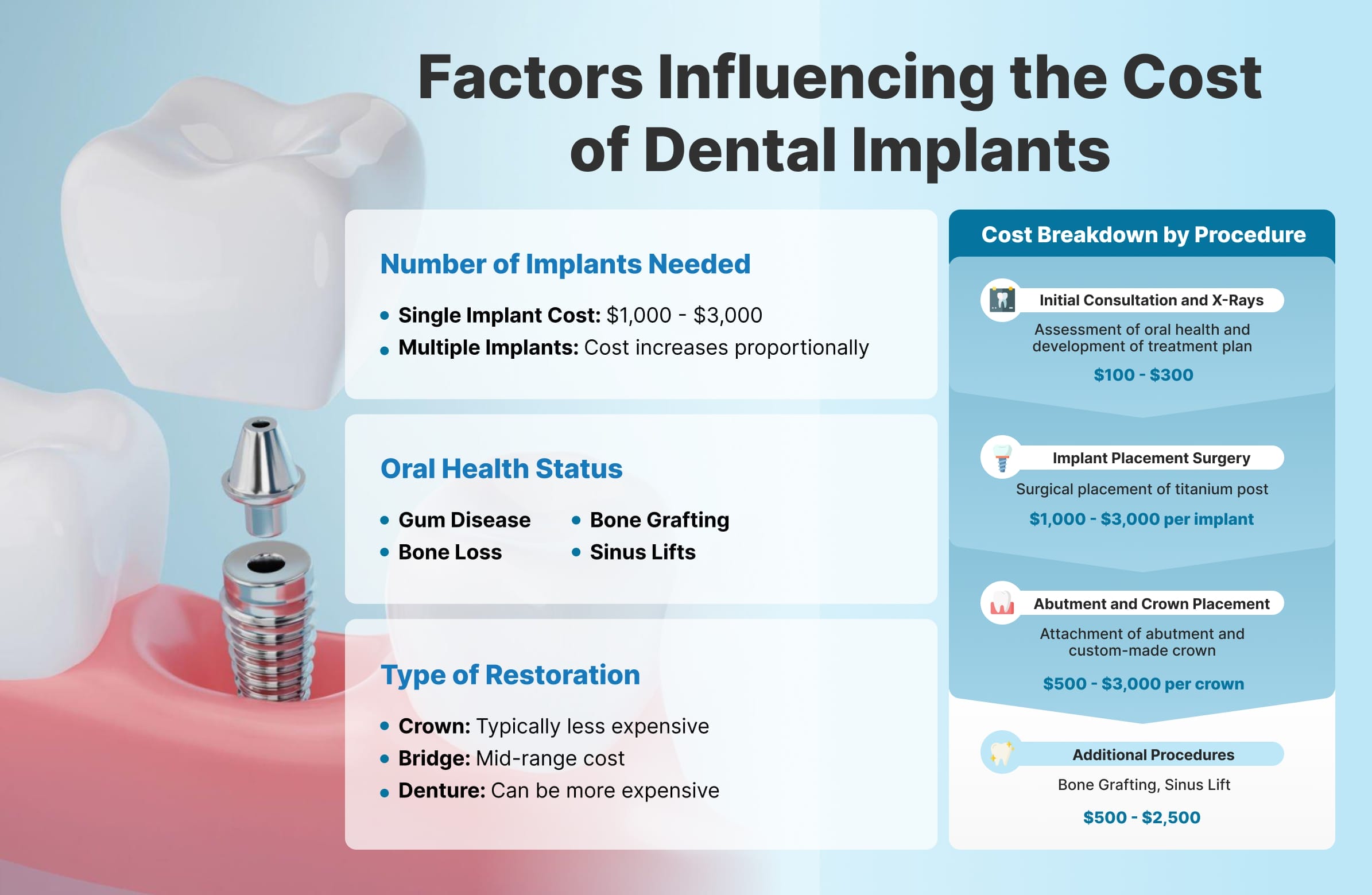An Unbiased View of Dental Sense
An Unbiased View of Dental Sense
Blog Article
The Main Principles Of Dental Sense
Table of ContentsLittle Known Questions About Dental Sense.About Dental SenseGetting The Dental Sense To WorkFacts About Dental Sense Revealed
are clinical tools operatively implanted into the jaw to bring back a person's capacity to chew or their look. They provide support for artificial (fake) teeth, such as crowns, bridges, or dentures. When a tooth is lost due to injury or condition, an individual can experience problems such as fast bone loss, defective speech, or changes to eating patterns that cause discomfort.Oral implant systems contain an oral implant body and oral implant joint and might likewise consist of a joint addiction screw. Professional teeth whitening. The dental implant body is operatively placed in the jawbone in location of the tooth's origin. The dental implant abutment is normally connected to the dental implant body by the abutment fixation screw and expands with gum tissues into the mouth to support the affixed artificial teeth
(https://padlet.com/matthewmusic33101/dental-sense-ljnep063jjnbcvdg)Structure of The Oral Implant System selecting dental implants, speak with your dental copyright about the potential benefits and dangers, and whether you are a prospect for the procedure. Things to take into consideration: Your general health and wellness is an important consider figuring out whether you are a great prospect for oral implants, how much time it will certainly require to heal, and how long the implant might remain in location.
Cigarette smoking may impact the healing process and lower the long-lasting success of the implant. The recovery process for the dental implant body may take a number of months or longer, during which time you typically have a short-term abutment in location of the tooth. the dental implant treatment: Meticulously comply with the oral hygiene instructions offered to you by your oral provider.
What Does Dental Sense Do?
Implant failing can lead to the demand for one more surgery to repair or replace the dental implant system. Restores the ability to chew Restores cosmetic look Assists keep the jawbone from reducing because of bone loss Maintains the wellness of the bordering bone and gum tissues Assists keep adjacent (neighboring) teeth stable Boosts lifestyle Damages to bordering all-natural teeth during dental implant positioning Injury to the surrounding tissues throughout surgery, such as sinus opening Injury during surgical treatment (as an example, fracture of surrounding jawbone) Poor feature, such as seeming like the teeth do not attack with each other normally An experience that the tooth hangs or turning in place resulting from a joint screw loosening up Implant body failing (looseness of the dental implant body) as a result of systemic infection, which might be more probable in people with unrestrained diabetics issues as a result of regional infection in bone and gums supporting the dental implant body because of delayed recovery, which may be more probable in clients that smoke Problem cleaning the periodontals around the implant, resulting in poor dental hygiene Untreated gum condition Post-surgical pins and needles because of nerve impingement or damages Always alert wellness care providers and imaging technicians that you have oral implants before any magnetic vibration imaging (MRI) or x-ray procedures.
FDA is not conscious of any adverse occasions reported for MRI or x-ray procedures with dental implants. Oral implants systems are typically constructed from products that comply with international consensus criteria of the International Organization for Standardization (ISO) or ASTM International. These standards have information of what makes a safe material.

A dental implant is a framework that replaces a missing out on tooth. With screw-like tools, the cosmetic surgeon inserts a dental implant into the jawbone, and it acts as an anchor for a synthetic tooth, called a crown.
Dental Sense Fundamentals Explained
Some individuals are not eligible for oral implant surgical treatment. It is for dental doctors to operate individuals with: acute illnessuncontrollable metabolic diseasebone or soft cells illness or infectionIf these problems are fixed, a person can have the surgical treatment. In, dental specialists avoid operating on people with: If people with any one of the above undertake oral implant surgical procedure, there is a higher danger of the dental implant falling short.

Dental dental implant surgical treatment is a customized process. Give you time to recover. Attach the message and final crown, bridge or denture.
Next, your cosmetic surgeon will thoroughly put the oral implant into your jaw. If your dental implant is near the front of your mouth, your dental practitioner will make a short-term tooth for you read review to use up until you heal.
Excitement About Dental Sense
Your copyright can tell you what to anticipate in your situation. Throughout the healing stage, your jawbone needs to fuse to the oral implant. This process, called osseointegration, is critical for security and long-term success. This process can take anywhere from three to nine months. In some cases, it may take longer.
Once your implant heals, your dentist can attach the joint (small connector post) and your final remediation (crown, bridge or denture). This typically takes concerning one hour to complete and might require a second small surgical treatment. You shouldn't really feel any pain throughout your oral implant procedure due to the fact that your provider will certainly utilize medicine to numb your gum tissues.
Report this page